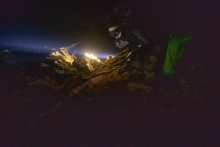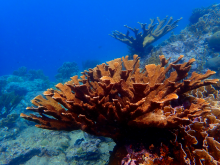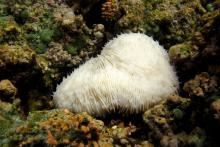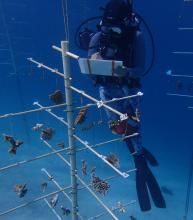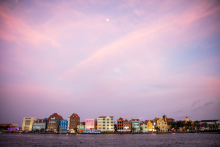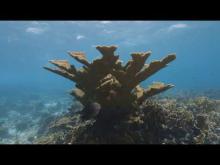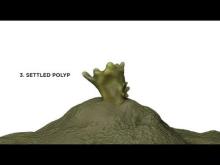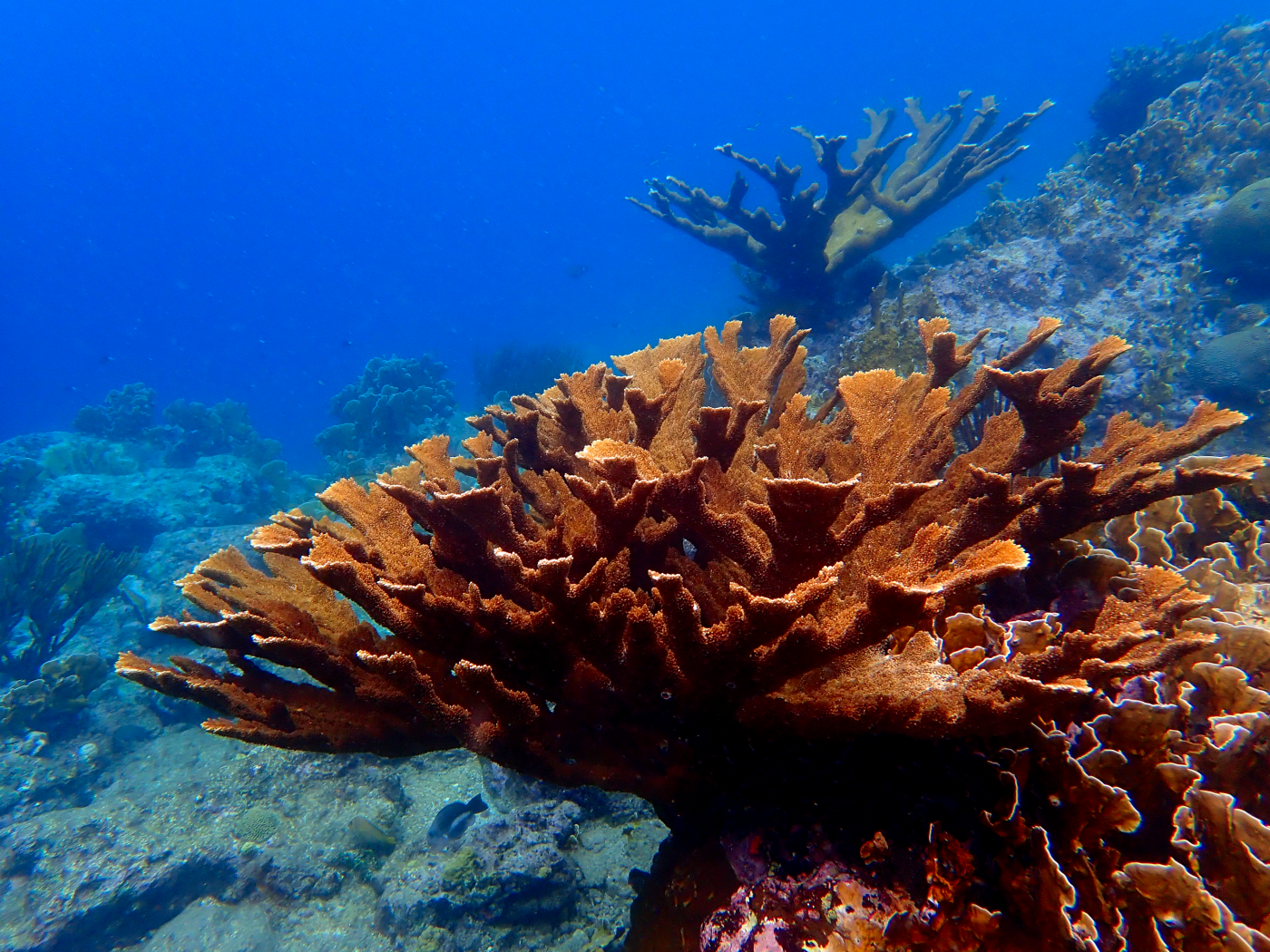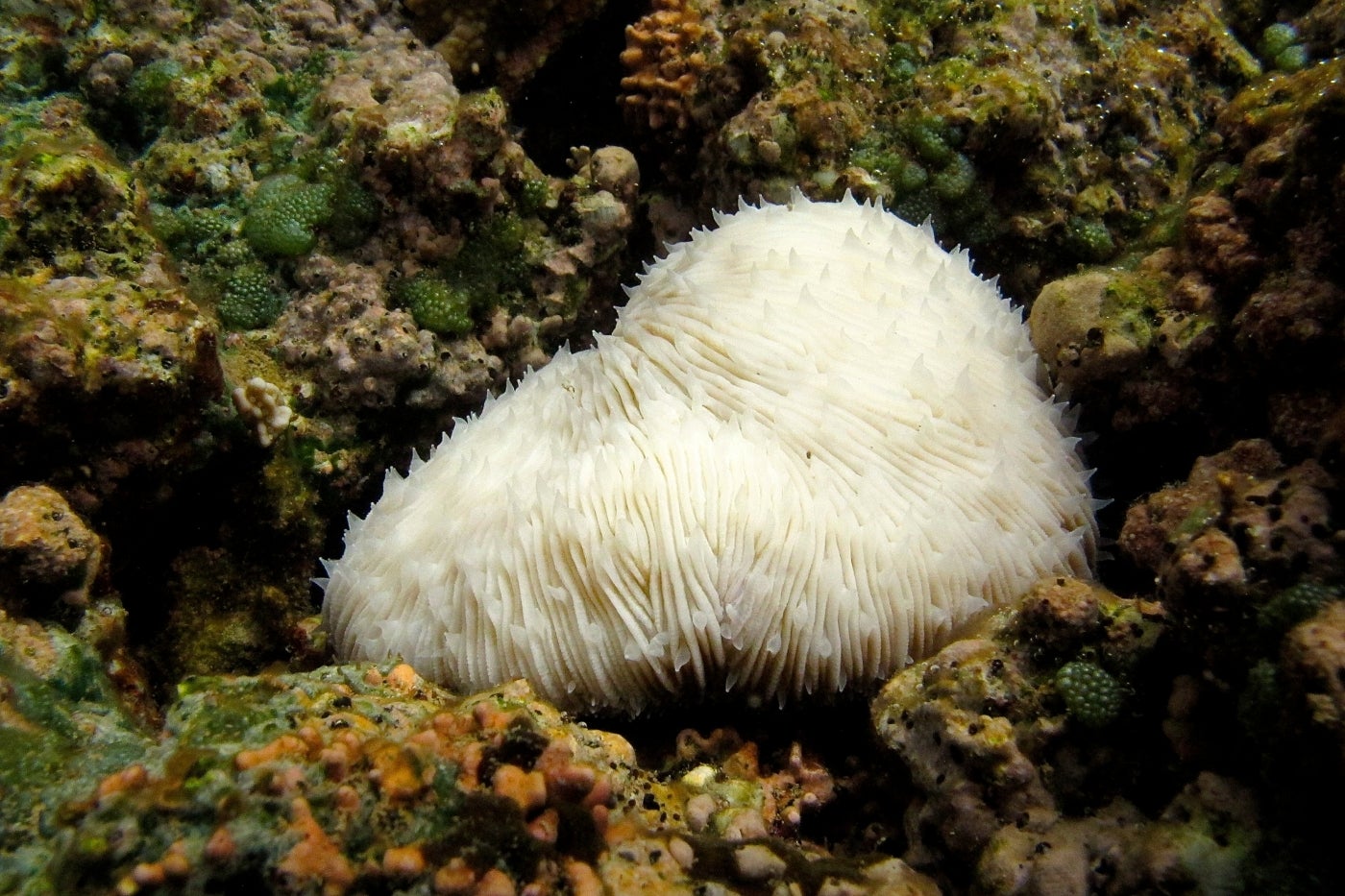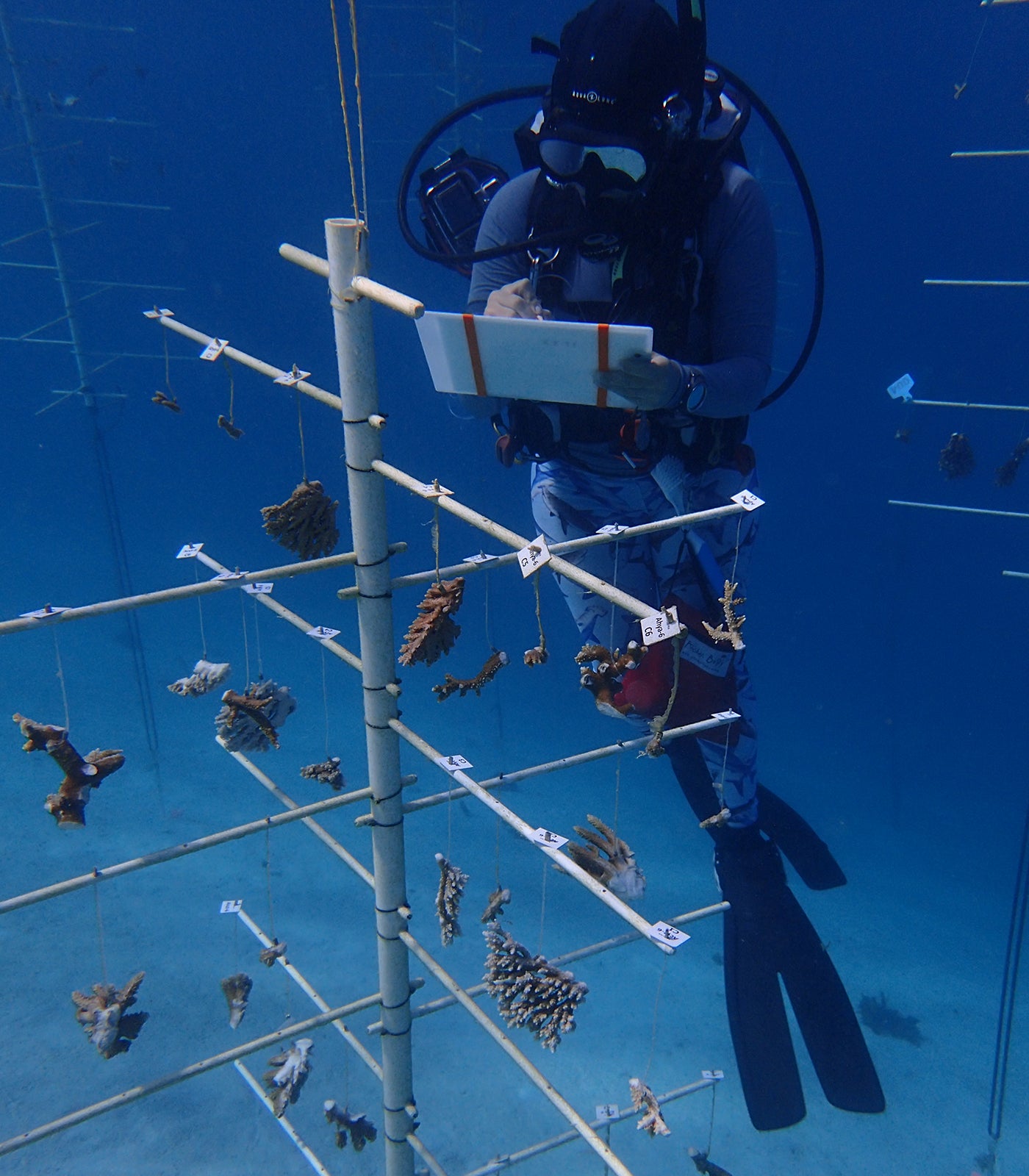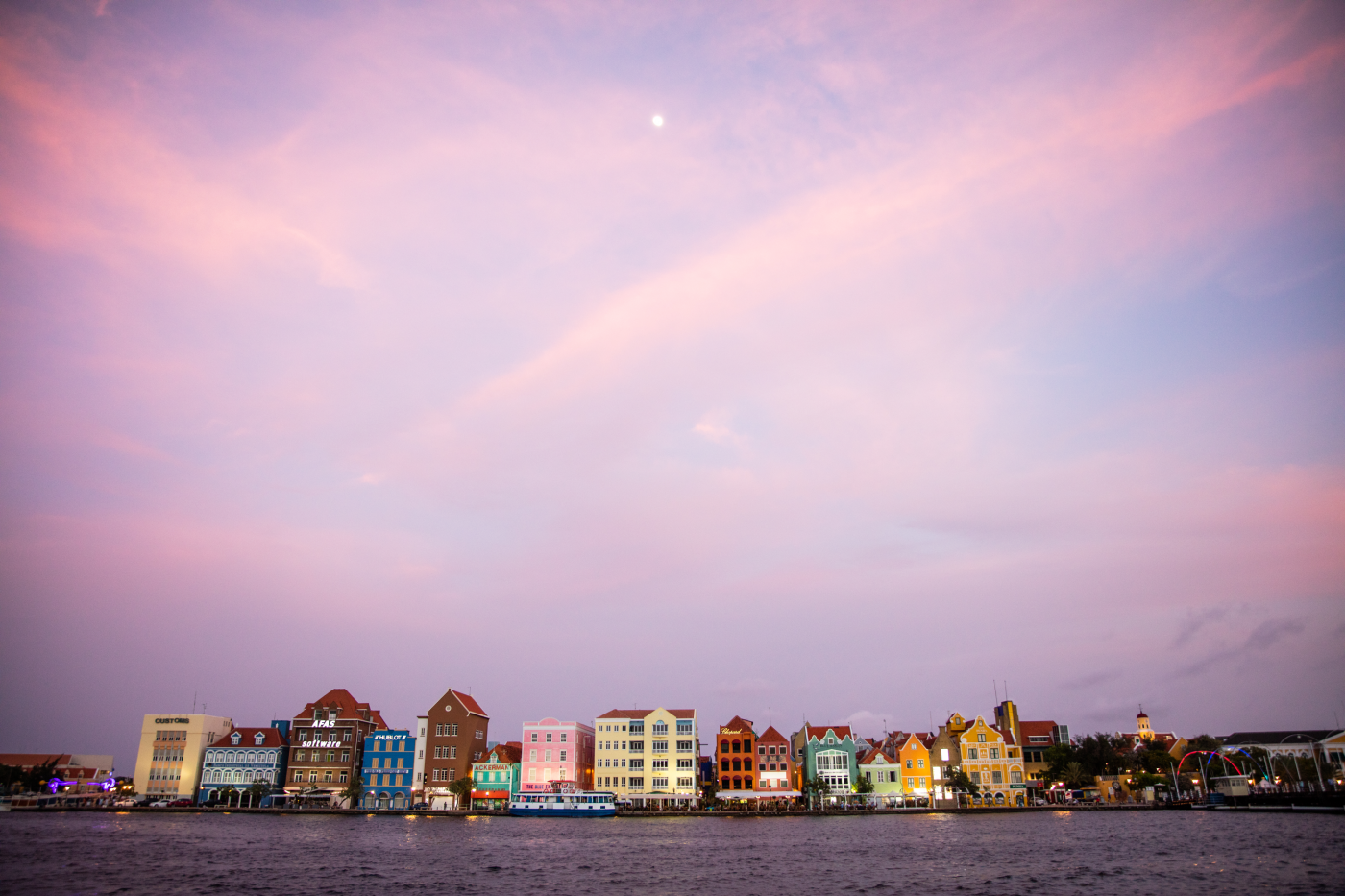Field in Focus is a video series that brings you into the field with Smithsonian scientists working to save species around the globe.
Coral reefs support one-quarter of all ocean life, help feed millions of people, and protect homes and cities. Yet, they are threatened by the global effects of climate change. As oceans warm and become more acidic, corals may not be able to adapt fast enough to survive. If reefs disappear, the entire world would feel the impact. Smithsonian scientists have spent years studying coral reefs and thinking creatively about how to save them. Follow them into the field to see why their work is bringing new hope to the future of coral conservation and restoration.
Update as of Sept. 7, 2021: The coral larvae in this film are now two years old and thriving under human care! They represent one of the largest living wildlife populations ever created from cryopreserved material. Read more about this success.
Coral 101
They may look like plants, but corals are actually animals. They come in many shapes, sizes and colors, but nearly all corals live in colonies formed by many tiny, genetically-identical individuals, called polyps.
There are soft corals with thick, pliable branches and thin, flexible fan corals that anchor in the mud or sand. Some are found deep in the ocean’s dark, cool waters, while others inhabit the warm, shallow tropics.
Stony corals produce and grow hard, calcium carbonate skeletons (like human skeletons that develop over time). They are the builders and architects of the oceans, forming reef structures as they grow. So, corals are both animals and habitat. For this project, Smithsonian scientists focused their efforts on a species of stony coral, called elkhorn coral (Acropora palmata).
Elkhorn coral is named for its thick branches which resemble an elk’s antlers. It is one of the largest coral species in all the oceans, and its unique shape and structure helps protect shorelines against damaging wave action. Elkhorn corals also create hiding places for fish and other marine animals. So, in some sense, they are the apartments of the oceans.
Coral Reproduction
Like most coral, elkhorn coral reproduces in two ways. The first is by fragmentation, which happens when small pieces of an elkhorn coral break loose. These pieces can jam into crevices, reattach and form new colonies that are clones of the original. Coral can also reproduce through sexual reproduction, which creates new individuals. Those individuals may have new genetic traits that could help coral adapt to changing ocean conditions.
Many corals, including elkhorn, are hermaphrodites – which means they produce both male and female gametes. Most elkhorn coral spawn for just a few nights each summer, following a full moon. About three hours after sunset, the corals simultaneously release their egg-sperm bundles into the water. The bundles float to the surface of the sea, where they break apart and become fertilized eggs.
Life Stages of an Elkhorn Coral
The Challenges Coral Reefs Face
Coral reefs are hubs of biodiversity, rivaling rainforests on land. They provide shelter for marine plants and animals, form a buffer between land and sea, bolster the global economy and are a source for new, potentially life-saving medicines. Despite their importance, coral reefs cover less than 1% of the entire ocean — and they are rapidly disappearing. Reefs are threatened by over-fishing, harvesting, development and pollution. The damaging effects of climate change, such as ocean acidification and warming waters, also make corals more susceptible to bleaching and disease.
Half of the world’s corals have died in the last 100 years alone, and three quarters of the ocean’s remaining coral reefs are expected to experience annual bleaching events by the end of the century. The Caribbean has already lost 98% of its elkhorn coral.
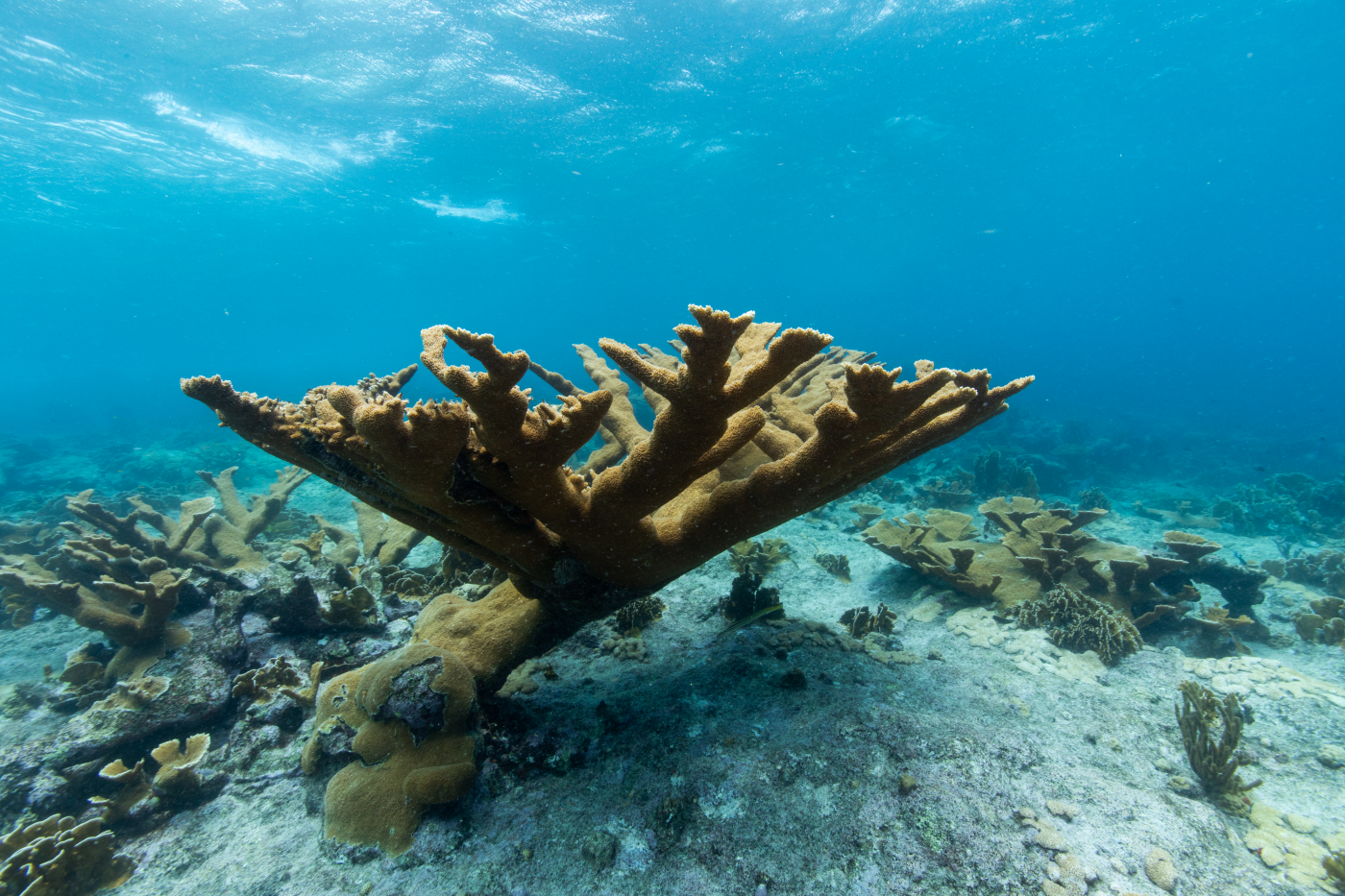
As coral populations are threatened and die, fewer individuals are left to reproduce, causing these populations to become less genetically diverse. Genetic diversity is critical for wildlife health, especially for animals that are impacted by a changing environment. A biodiverse population of coral is better equipped to endure environmental pressures, like warming waters, because it is more likely that some individuals will have genetic variations to help them adapt and survive.
Maintaining genetic diversity among corals can be challenging. The adults are attached to a sea bottom, while the floating larvae are restricted by ocean currents and the space available to settle. This limits the number of genes that can be shared among corals. For example, the eastern population of elkhorn coral in Curaçao would not naturally meet and reproduce with the western population in Florida. One population might have advantageous traits that could help corals survive warming waters, so how can two separate populations come together?
Scientists are creating these long-distance romances by taking coral sperm from one area and introducing it to coral eggs from another area. This process is called assisted gene flow and was first demonstrated with coral on Australia’s Great Barrier Reef. However, corals from the same species that live far apart don’t always spawn at the same time. To overcome this obstacle, Smithsonian scientists developed an advanced reproductive technique, called sperm cryopreservation.
They first collect and freeze coral sperm to preserve it. Then, they can transport the cryopreserved sperm, thaw it and introduce it to fresh eggs when the time is right. For the first time, the researchers tested assisted gene flow on corals using frozen sperm to match the eastern and western populations of elkhorn corals. The coral sperm that they used had been frozen and stored for nearly 10 years, and the young elkhorns that resulted are thriving under human care in Florida. The success of this first trial introduces a brand-new tool for coral restoration and the future survival of the ocean’s reefs.
